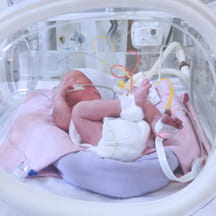This course reviews the process of hematopoiesis in the fetus and newborn and discusses the etiology, clinical presentation, diagnosis and management of anemia and polycythemia. Complications of each disorder will also be discussed.
Objectives
- Define anemia and polycythemia.
- Describe the process of hematopoiesis in the fetus and newborn.
- Outline the etiology of neonatal anemia and polycythemia.
- Summarize the clinical presentation for anemia and polycythemia.
- Discuss diagnostic evaluation and management of the neonate with anemia or polycythemia.
- Describe the complications of anemia and polycythemia.
Key features
- The editor-in-chief of “Neonatal Network: The Journal of Neonatal Nursing” authored this course.
- Two case studies, one for anemia and one for polycythemia, provide an in-depth look at the impact each of these conditions can have.
Quick facts
- New version released on Feb. 1, 2020
- Approved for 1 ANCC contact hour
More details
Anemia and polycythemia are two of the most common hematologic disorders in the neonatal critical care environment. Anemia, or reduced number of red blood cells, may present acutely as hypovolemic shock after birth or may develop over time.
Polycythemia, or increased concentration of red blood cells, leads to thicker blood which, in turn, can reduce blood flow to the brain, lungs and heart. Both conditions can have serious consequences in the neonate and should be monitored for closely in order to achieve the best outcome.
Note: This course is only available to staff at PLS Participating Hospitals through their Learning Management Systems.






